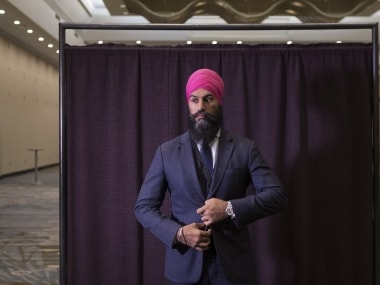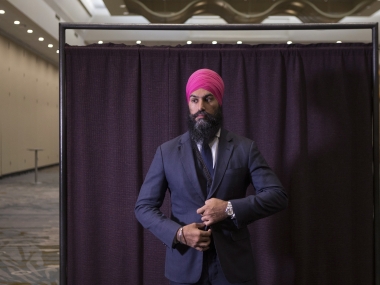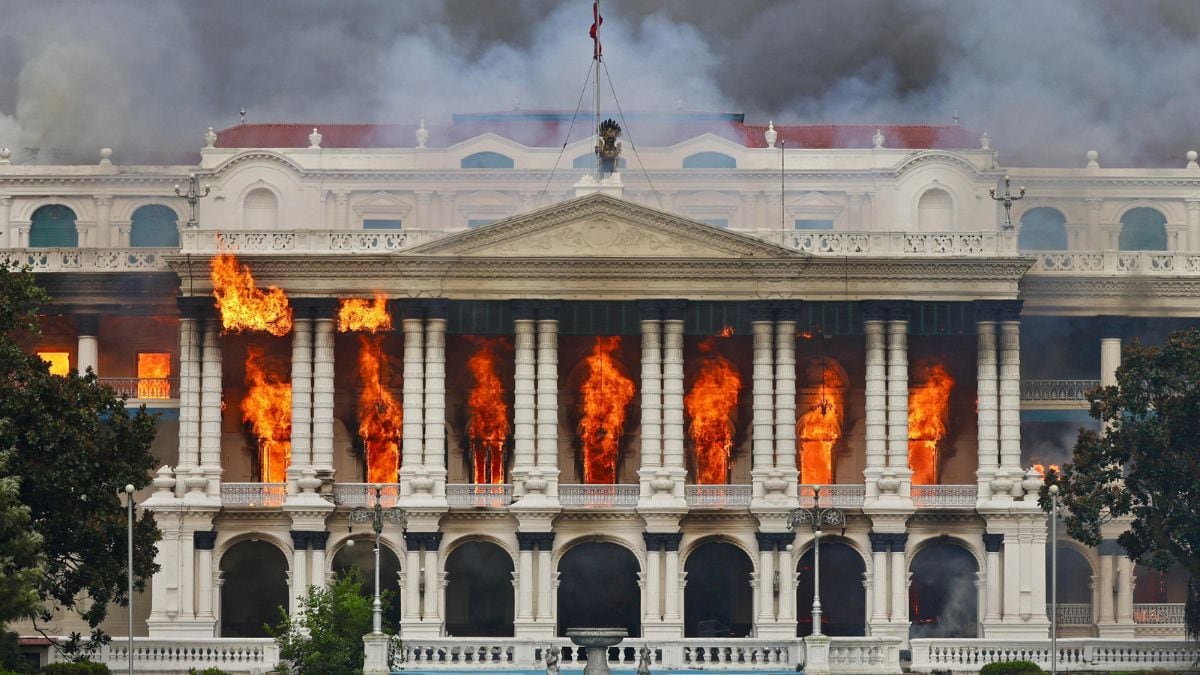Ultimately, it were 2,929 votes that may have saved Jagmeet Singh, leader of the New Democratic Party (NDP) in Canada, from a political demise that would have been as quick as his dizzy rise in Canadian politics. Party veterans, including Singh’s predecessor Thomas Mulcair, had warned that a defeat in the by-election to the House of Commons could lead to the 40-year-old’s ouster from the post and the NDP electing someone else to helm its campaign for the federal election due October 21. Singh knew that a defeat in Burnaby South, a constituency in British Columbia, would be a serious setback. Since making known his intent to contest, he moved to Burnaby and even cast a ballot for his own election. [caption id=“attachment_4105791” align=“alignleft” width=“380”]  Canadian leader Jagmeet Singh after his first-ballot triumph in the contest for leader of the leftist NDP. AP[/caption] Eager to avoid a humiliation, the party poured its resources, including field workers. Singh emerged victorious with less than 40 per cent of the vote. Barely 30 per cent of the registered voters turned up despite a federal party leader featuring in the race. Gerald Baier, a political scientist with the University of British Columbia, was clear that the victory was “vital” to Singh’s “survival as a political actor”. The fact was not lost on Singh, as he said, “Thanks to a vote of confidence from the people of Burnaby South, today isn’t the end of a campaign – it’s the start of one.” Just 17 months ago, Singh was being hailed as Canadian Prime Minister Justin Trudeau’s “worst nightmare” not only in the Canadian media, but also globally. When he took over as the NDP leader in October 2017, Singh was the first person from a visible minority to lead a federal party in Canada. Armed with charisma, adorned in bespoke suits and an array of colourful turbans, Singh’s arrival was heralded with superlatives. That was the zenith of his career, so far. But the honeymoon didn’t last. In the spring of 2018, Canadian media reported on a videos showing the Indian-origin Sikh leader speaking at pro-Khalistan events in San Francisco and London. Battered by criticism, Singh, seemingly adopted new positions each day, as often as he changed his expensive suits. He also refused to condemn gurdwaras for prominently displaying portraits of the mastermind of the 1985 bombing of the Air India flight 182, Talwinder Singh Parmar. Over the months, his popularity cratered as did the prospects for his party. The only option was to enter the House of Commons, where he would have a an opportunity to debate Trudeau directly instead of taking potshots from the periphery. For New Delhi, Singh’s emergence on the Canadian national political stage is worrisome. Singh has the dubious distinction of being the only elected representative from a Western nation to have been denied a visa to India. But his immediate challenges are closer home. An election win does not wash away the structural challenges ahead of the federal election. Singh’s leadership may not have inspired confidence within the party caucus in parliament as well — several NDP MPs have announced they will not seek a re-election this time. After the 2011 federal election, the NDP outpaced the Liberal Party to become the official Opposition party in Canada. The 2015 election were a disaster, leading to Mulcair’s resignation. And all signs indicate a potentially disastrous outcome in 2019. On the day Singh won, the non-profit public policy foundation Angus Reid Institute released a poll that showed that 64 per cent of respondents held unfavourable opinion about Singh and just 14 per cent would support his party in the national polls. That leaves Singh with a tough task. “It will be interesting to see how he performs and whether he is able to do that rebuilding work for his party,” Baier said. If he doesn’t, Singh may only have put off his departure as the NDP leader by a few months. (Anirudh Bhattacharyya is a Toronto-based analyst of North American issues)
Once Hailed as Trudeau’s ‘worst nightmare’, the New Democratic Party leader Jagmeet Singh has seen his popularity crater, his party is in a bad shape and his first election win is scratchy at best
Advertisement
End of Article


)

)
)
)
)
)
)
)
)



